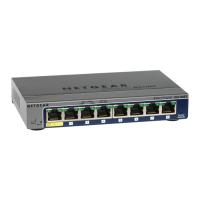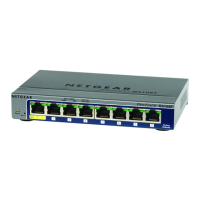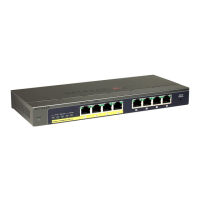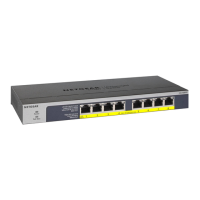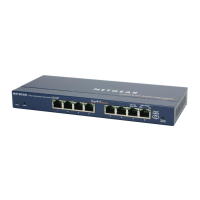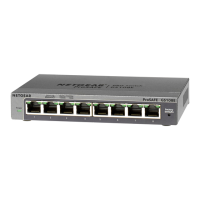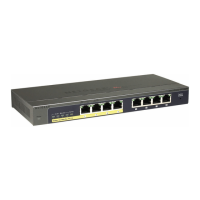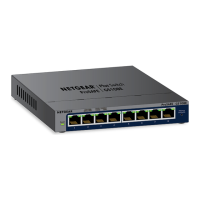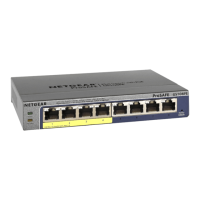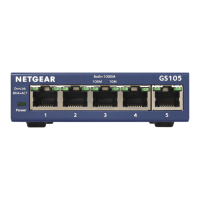8-Port Gigabit (PoE+) Ethernet Smart Managed Pro Switch with (2 SFP or 2 Copper Ports and)
Cloud Management
Configuration Examples User Manual468
Two basic types of QoS are supported:
• Integrated Services. Network resources are apportioned based on request and are
reserved (resource reservation) according to network management policy (RSVP, for
example).
• Differentiated Services. Network resources are apportioned based on traffic
classification and priority, giving preferential treatment to data with strict timing
requirements.
The switch supports DiffServ.
The DiffServ feature contains a number of conceptual QoS building blocks that you can use
to construct a differentiated service network. Use these same blocks in different ways to build
other types of QoS architectures.
You must configure three key QoS building blocks for DiffServ:
• Class
• Policy
• Service (the assignment of a policy to a directional interface)
Class
You can classify incoming packets at Layers 2, 3, and 4 by inspecting the following
information for a packet:
• Source/destination MAC address
• EtherType
• Class of Service (802.1p priority) value (first/only VLAN tag)
• VLAN ID range (first/only VLAN tag)
• Secondary 802.1p priority value (second/inner VLAN tag)
• Secondary VLAN ID range (second/inner VLAN tag)
• IP Service Type octet (also known as: ToS bits, Precedence value, DSCP value)
• Layer 4 protocol (TCP, UDP and so on)
• Layer 4 source/destination ports
• Source/destination IP address
From a DiffServ point of view, two types of classes exist:
• DiffServ traffic classes
• DiffServ service levels/forwarding classes
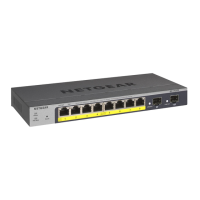
